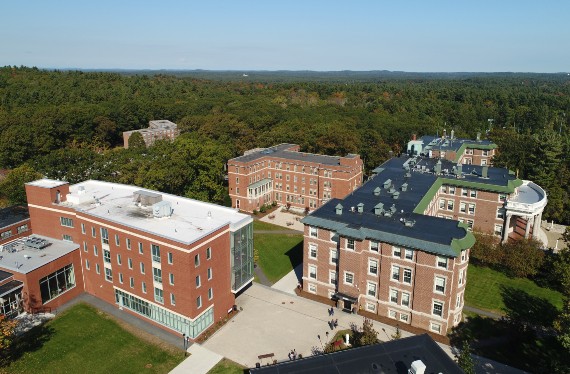 The most critical line of defense against COVID-19 is making its ways across the U.S., Regis College assistant professor Brian Plouffe explains how a safe and effective vaccine is developed.
The most critical line of defense against COVID-19 is making its ways across the U.S., Regis College assistant professor Brian Plouffe explains how a safe and effective vaccine is developed.
What are the steps that go into manufacturing a vaccine?
Manufacturing of vaccines is one of the most complex and regulated processes in medicine, and safety is held to the highest standard.
It is composed of several basic steps that result in the finished product. The first step is the generation of a molecule, called an antigen, that prompts the immune response. This step generally includes the generation of the pathogen itself or generation of a protein derived from the pathogen.
As the antigens are produced or grown in cells, the next step is the isolation and purification of the specific antigen. The final administered vaccine may also include inactive additives that enhance the immune response, stabilize the vaccine to prolong shelf life, as well as allow multidose vials to be delivered.
In the vaccine field, the product is considered the process. At the regulatory level, the manufacturing process must be registered as well. With every minor modification, a new authorization must be filed with the health authorities in each country. Vaccines are produced in batches. Each batch of vaccine must be tested at every step of its journey, and quality control of batches by different authorities around the world is common.
How does the manufacturing and development of the COVID-19 vaccines compare to others?
As of December 10, 2020, there are seven vaccines against severe acute respiratory syndrome coronavirus 2 (SARS-CoV-2 or COVID-19) in production.
Each one uses different approaches and methodologies to produce the required antigen. Uniquely for vaccine manufacturing, both Pfizer and Moderna are using messenger RNA vaccines—also called mRNA vaccines. COVID-19 mRNA vaccines give instructions for our cells to make a harmless piece of what is called the “spike protein.” The mRNA antigen manufacturing does not involve any cellular action and is driven by biochemical molecules call enzymes.
Our immune systems recognize that the protein does not belong there and begins building an immune response and making antibodies, like what happens in natural infection against COVID-19. A number of proprietary additives and stabilizers are added to ensure the mRNA gets into the cells to produce the spike protein. The mRNA technology is safer for the patient, as it is not produced using infectious elements.
In non-pandemic times, is it typical for multiple companies working on vaccine development to focus on the same kind of vaccine?
In non-pandemic times, it is very common for multiple companies to be working on similar vaccines. A number of larger pharmaceutical companies have several vaccine candidates in their product development pipelines. Some smaller companies will also have a vaccine candidate as their core product or technology. Given the importance of vaccines in public health programs globally, companies will work on the same pathogens. The World Health Organization (WHO) maintains a vaccine pipeline database that reflect the vaccine candidates globally.
It should be noted, that in some cases vaccine production is controlled by the Centers for Disease Control in the U.S., and/or the WHO. Influenza viruses continuously undergo mutations and thus need to be routinely monitored for circulating strains. The monitoring of human influenza is a truly global effort with a network of over 120 National Influenza Centres in more than 90 countries. About 400 million doses are manufactured, formulated, filled, packaged, and released each year.


